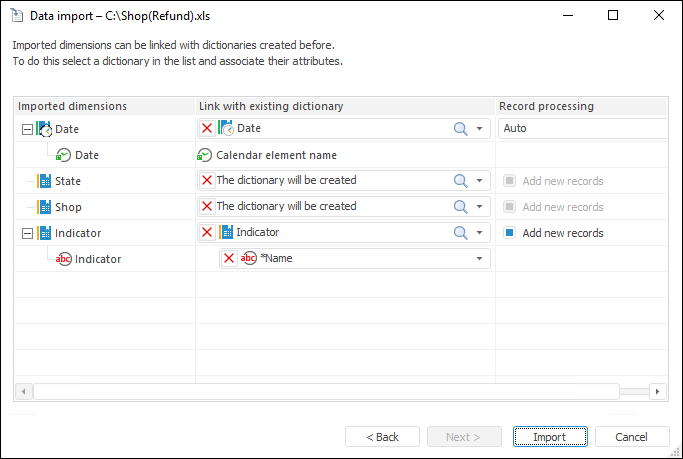
The page is displayed if a new data consumer is selected, the page is used to bind imported dimensions with existing repository dictionaries.

To bind dimension with existing dictionary, select the dictionary in the drop-down list next to the required dimension. Only table or composite table MDM dictionaries and calendar dictionaries are available to choose from.
To add to the list of elements of the selected dictionary from data source, select the Add New Records checkbox. If the checkbox is deselected, elements are not added, and data is imported only by the elements that are present in the source and selected dictionary. If consumer dimension is not selected, or the binding is reset by the user, the drop-down list with dimensions displays the Not Specified text. The Add New Records checkbox is not available in this case. The required frequency can be selected for the calendar dimension in the drop-down list. By default, the frequency is determined automatically by the first loaded records. If the existing calendar dictionary is selected, its parameters are changed.
Only the elements available in the dictionary are used for binding to data.
NOTE. Account for import features when importing data to hierarchical and multilingual dictionaries.
If the dimension is not bound with the existing dictionary, a new MDM dictionary is created for it.
On clicking the Import button the following objects are created: a new standard cube, all required dictionaries and tables, data is imported.
If errors occur on data import, the Data Import Conflicts dialog box opens after import is finished. If there are no errors, the last page of the import wizard is displayed, that is, Setting Up Dictionaries.
See also: